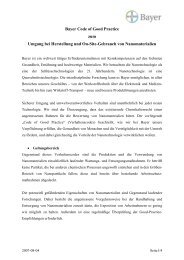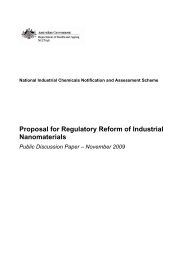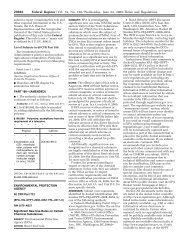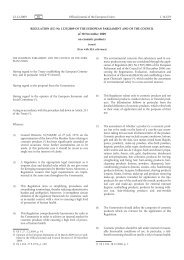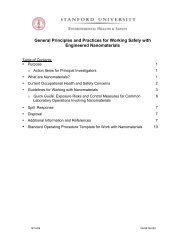Nanotechnology and Construction
Nanotechnology and Construction
Nanotechnology and Construction
You also want an ePaper? Increase the reach of your titles
YUMPU automatically turns print PDFs into web optimized ePapers that Google loves.
Report on <strong>Nanotechnology</strong> <strong>and</strong> <strong>Construction</strong><br />
The logical conclusion of the research being conducted on materials is that, as well as<br />
buildings, the other areas of engineering structures <strong>and</strong> architecture likely to be affected in<br />
the future are roads <strong>and</strong> bridges, <strong>and</strong> this was indicated by the respondents.<br />
The survey also asked what the possible global market impact of the future applications of<br />
nanotechnology in construction might be. Although difficult to predict, estimates ranged to<br />
billions of euros <strong>and</strong> this is to be expected for the same reasons covered in the section above<br />
on current work. One respondent commented that they thought the economic impact would<br />
extend to the entire cementitious <strong>and</strong> polymer industries.<br />
Most respondents (67%) believed that this future work would impact the construction<br />
industry within 5-10 years <strong>and</strong> the timescale fits with the research intensive nature of the<br />
technology. However, 10 years is close enough that the commercial implications for industry<br />
cannot be ignored <strong>and</strong> the construction business should be looking at these changes sooner<br />
rather than later. At the moment, 4 million tn/yr of TiO 2 pigment are produced globally <strong>and</strong><br />
there seems to be no reason for production not to increase to meet the dem<strong>and</strong>s of the ever<br />
widening field of application in construction. In contrast, only 65 tn/yr of carbon nanotubes<br />
are produced currently worldwide <strong>and</strong> only a 60% growth in production is predicted in the<br />
next five years. It is believed that prices will remain too high for widespread use of carbon<br />
nanotubes in construction, despite dropping significantly from their current 20€ to<br />
1000€/gram. Expensive, small scale production of nanotubes as well as clumping, lack of<br />
binding to the bulk material, <strong>and</strong> temperature effects are therefore key barriers to their<br />
application in the industry. Barriers to further applications of nanotechnology to glass are the<br />
lack of non-metallic CVD coating techniques mentioned above as well as a deficiency of<br />
large scale nanoparticle deposition processes which can be integrated with existing ones at<br />
atmospheric pressure.<br />
Resources for Research<br />
Respondents were asked about the level of research both in the industry as a whole <strong>and</strong> in<br />
their own companies <strong>and</strong> the results are discussed below.<br />
6a Is there adequate research funding for<br />
<strong>Nanotechnology</strong> in <strong>Construction</strong> ?<br />
28%<br />
0%<br />
Yes<br />
No<br />
Don't Know<br />
72%<br />
Page 33 of 55



